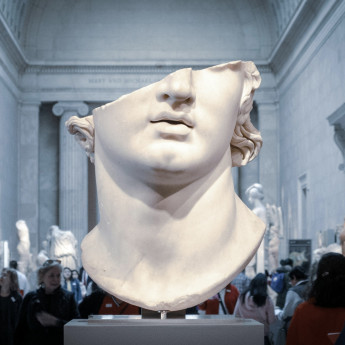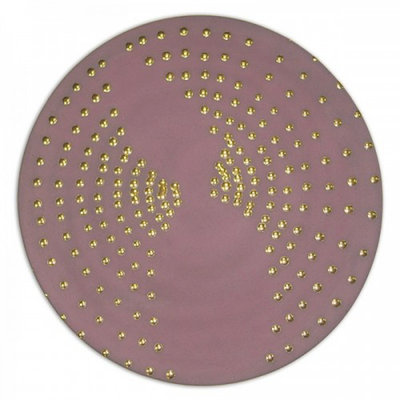



Details
Artist
Styles
Published by Denise Rene. Publisher's blind stamp in the lower left corner. // Rafael Jesus Soto’s Caroni (1971) is a limited edition silkscreen print that embodies the artist’s exploration of geometric abstraction and optical effects. Measuring 84 x 59 cm, the work features a structured composition with horizontal bands of color and a row of four black squares against a grey-striped background. The vivid blue stripe contrasts sharply with the neutral tones below, creating a sense of depth and dimensionality. Soto’s meticulous use of line and color generates a visual vibration that engages the viewer’s perception, a hallmark of his kinetic and optical art influences. Published by Denise René, the print includes the publisher’s blind stamp in the lower left corner, marking its authenticity. Caroni is an excellent representation of Soto’s ability to manipulate simple forms to create complex visual experiences.
Caroni, 1971
form
Medium
Size
84 x 59 cm
- Inches
- Centimeters
Edition
Price
- USD
- EUR
- GBP
Details
Artist
Styles
Published by Denise Rene. Publisher's blind stamp in the lower left corner. // Rafael Jesus Soto’s Caroni (1971) is a limited edition silkscreen print that embodies the artist’s exploration of geometric abstraction and optical effects. Measuring 84 x 59 cm, the work features a structured composition with horizontal bands of color and a row of four black squares against a grey-striped background. The vivid blue stripe contrasts sharply with the neutral tones below, creating a sense of depth and dimensionality. Soto’s meticulous use of line and color generates a visual vibration that engages the viewer’s perception, a hallmark of his kinetic and optical art influences. Published by Denise René, the print includes the publisher’s blind stamp in the lower left corner, marking its authenticity. Caroni is an excellent representation of Soto’s ability to manipulate simple forms to create complex visual experiences.
- Recently Added
- Price (low-high )
- Price (high-low )
- Year (low-high )
- Year (high-low )
What is the Zero Movement?
ZERO was an art movement founded by Otto Piene and Heinz Mack, aiming to develop into a large international and cross-border movement. The name ZERO originated from a magazine founded by Heinz Mack in 1957, which became a platform for the group's ideas. The magazine was published for several years before ceasing in 1967. The ZERO movement sought to create a new beginning in art, emphasizing light, space, and movement, and became influential in post-war European art.






























